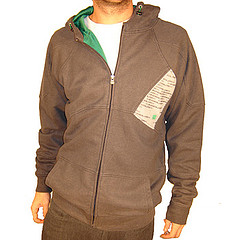Industrial Hemp For Textiles
Disclaimer: I am not a user of marijuana. Nor do I condone, nor condemn, the use of marijuana for recreational use. This is merely a look at the applications of industrial hemp. Industrial hemp is different than the plants that are grown for recreational drug use.

Hemp to Make Clothes and So Much More
Aside from the use of industrial hemp to make paper, industrial hemp can be used to make so many more things, including textiles ranging from ropes, sails, clothes, and on and on. As I said in my previous hub on using industrial hemp for paper, it is an easily grown industrial crop, that unlike the carefully cultivated varieties grown for recreational drug use, contains very little, or no THC. It is a good alternative to cotton, for many reasons. It is a higher yield crop than cotton, more environmentally friendly, and far more versatile.
A Brief History of Hemp Textiles
Hemp was grown for use in textiles for many years. It was grown for it's strong fibers that were used to make ropes, cording, sails and so much more. In America's early days, the sails, ropes, and riggings of the USS Constitution, "Old Ironsides" were made from hemp. The hemp used made for strong ropes and durable sails, and they even used it to make the uniforms of the sailors and soldiers, and even the early American flags.
The covered wagons that traveled across the country in the pioneer days were covered with hemp canvas.
Prior to 1937, 70-90% of all rope, twine and cording was made from industrial hemp.
The original Levi's jeans were made from recycled sail cloth made from hemp. And, in 1941, Henry Ford used hemp and other fibers to make the body of a car! Yes, I said the body of a car was made from hemp. And I am not talking about a Cheech and Chong movie...


Why Hemp?
With all the synthetic and natural fabrics out there, why use industrial hemp? There are so many reasons!
It is a fast growing plant with long fibers. The longer the fiber, the stronger the material. It is one of the most durable fabric making materials, and stands up to wash and wear better than cotton. The fabric will soften but not weaken.
It is a far more versatile material than most fabrics. It can be used to make everything from coarse fiber materials such as canvas or carpet backing to fine fabrics such as fine linens and alternatives to silk. As I said, it can be used to make ropes, cording and twine. But, it can also be used to make so many more things like clothing, bags, shoes, carpets and rugs, blankets, and just about anything you can make from cotton or other fabric making materials.
It is more environmentally friendly than synthetic fabrics, and even more environmentally friendly than cotton. Some cotton these days claims to be organic, but in most cases of cotton production, they rely heavily on pesticides. Hemp can be grown without the use of pesticides. Hemp can also be grown more economically than cotton. On the basis of yield per acre, hemp out produces cotton by about 200%! So, a farmer could grow an acre of hemp and an acre of cotton and get 200% more usable product from the acre of hemp. This is because industrial hemp grows very tall with a small cluster of flowers and leaves at the top, and the usable part of the plant is the tall stalks. Cotton grows lower to the ground, and the usable part of the plant is the little cotton pods that grow on the plant.
So, industrial hemp is faster growing, easier to grow, uses less chemicals, is more versatile, and produces stronger materials. So, why are we still using less desirable materials? I can't entirely answer that, but I do have some theories.The most likely reason is the association of hemp with marijuana use. This is a silly reason, but it is there, none the less.


© 2010 Anna Marie Bowman









